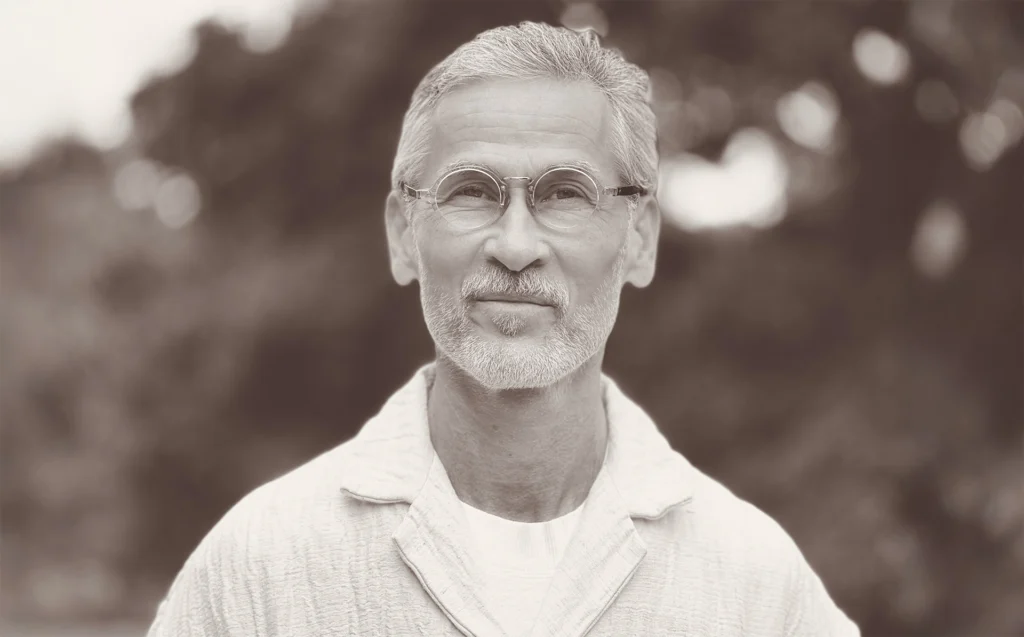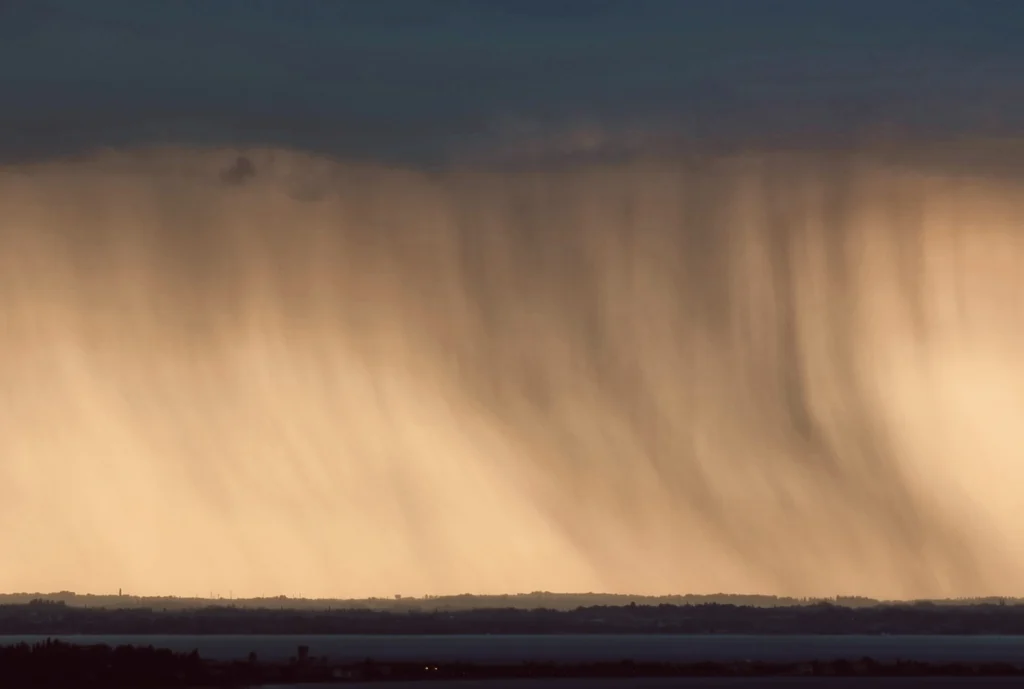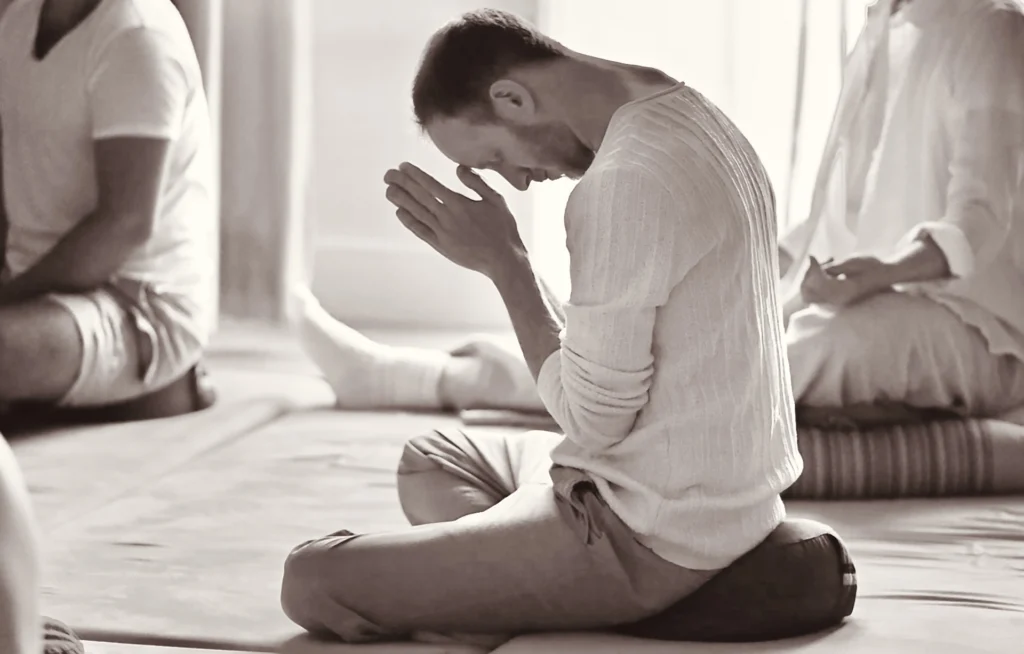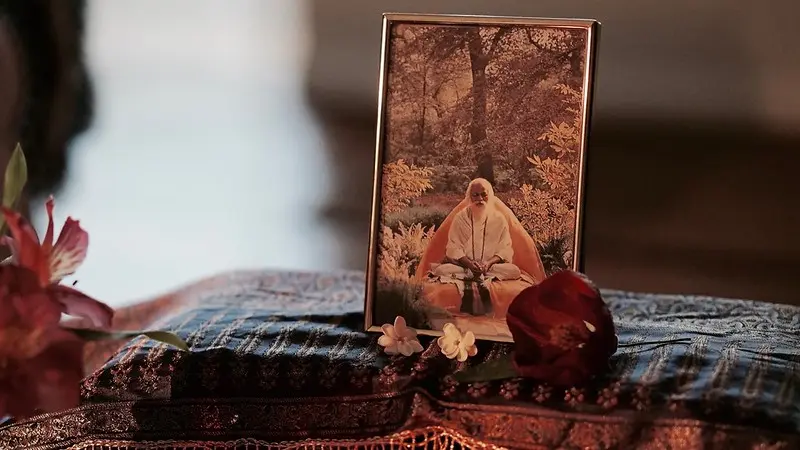Guru Purnima — The Totality of Knowledge
“Spiritual development is the process which brings to light and to our direct experience the hitherto unknown and unexperienced glories of the subtler aspects of our being. Spiritual development is the process of unfolding the essential nature of the soul and bringing it out to light from the hidden chambers of ignorance – ignorance that stands as a covering and hides the subtle and glorified aspect of our inner personality. Spiritual development is the process of revelation of the ultimate truth of our life, the Sat-chit-ananda, which is the greatest heritage of one and all. This most treasured heritage is really the fountainhead of all joy in life, material and divine”.
– HH Maharishi Mahesh Yogi – 23 October 1955, Spiritual Development Conference, Cochin, Kerala, India, from Beacon Light of the Himalayas (November 1955)
Today on Guru Purnima, we honour the presence and role of the teacher and all teachers in their entirety of forms. Under the fulness of the moon, which represents the reflective powers of the mind, capable of perceiving the utmost truth of the Self, we embrace this moment to reflect on the primordial principle, the Tattva of Guru, in which the timeless dynamic of being taught lies concealed and waxes revealed. The holy mechanism of Consciousness itself, which ensures the transfer of knowledge in its purest essence between Teacher and Student, Master and Initiate, Guru and Shishya.
And with hearts having grown more and more full, in the soothing vibrations of supreme wisdom imparted, we open them out in humble yet overflowing gratitude to our revered teacher and guide, Igor Vamadeva Kufayev; the conduit where timeless knowledge simply overflows from the teacher to student through the eternal Guru principle.

The very knowledge, brought forth in the unbroken lineage of light, through venerated Guru Dev, it was sown perfectly all over the world by His Holiness Maharishi, and received in full capacity by Vamadeva – now, keeping it ever alive as a living vessel of transmission which inflames the hearts of those initiated and guides lives in the completeness of both, the eternal and temporal, Heaven and Earth, the transcendent and worldly.
And in times, when a violation of Dharma is laid bare in heart-wrenching evidence, it is ever more imperative to rise into the understanding that the role and relationship of teacher and student encompasses all. It cannot divide itself from the duty that is here to be upheld through those very guardians and guides of evolution, the carriers of sovereign knowledge, to anchor presence where it is truly needed and ensure that there is a living song maintained in the world, the song of fulness reverberating throughout.
May we, Guru and disciple, be protected together. May we enjoy the fruits of our actions together. May we achieve strength together. May our knowledge be full of light. May we never have enmity for one another. (Krishna Yajurveda Taittiriya Upanishad, 2.2.2)
In service and with deep love,
Your dedicated Students & Sangha
_____
Below, please enjoy and reflect upon a passage exploring the teacher-student relationship and the importance of initiation into what may be the greatest mystery and deepest relationship of all – a sacred bond that illuminates the path to one’s own Self
Esoteric Dimensions of Initiation: Ritual, Transmission & the Inner Shamanic Fire
by Igor Kufayev
As soon as we misplace the provenance of what gives us freedom – in other words, we superimpose it onto something else – the trajectory is created where that freedom and happiness is relentlessly being pursued in that where that cannot be gained. In other words, it becomes a mission impossible, truly. Perennial traditions, of course – all without exception – speak about this. But this discourse is not to bring now the collision between ideological perspectives, what dominates and becomes the leitmotif for geo-political expressions of certain prevalent systems, but how that sits and translates into this ecumenical, more hermeneutic settings of spiritual discourse, learning – transmission, as has been suggested by you – in the relationship of student and teacher. Because it infringes into the uncomfortable territories here – where is that freedom being usurped? Where is that freedom being infringed? So if we do not make any attempts to clarify where lies the individual freedom in the first place, then perhaps at a given we are building on shaky grounds, and we are, effectively speaking, always at the mercy of any tremor, of any wave, or sometimes just a gust of wind before it all collapses as a house of cards.

And this is literally the stuff of legends in our day and age, because that relationship is subjected strongly to an inherent mistrust in authority figures per se. And authority figures in our day and age have undergone various kinds of incarnations and re-evaluations, particularly as it is associated with tyrannical regimes – it is associated with these social structures known as fascism and communism and what have you not. Some attempts have been created, where the repercussions and the echoes of that, the sediments of that, are being left and experienced by us all.
Therefore in those traditions where this was simply suckled with the milk of the mother, it’s easier – maybe even too easy. Sometimes, it is said that in a country like India or some other eastern countries, Asia, it is easy because it’s a way of life. It’s a given; you don’t need to kind of bend yourself over. It’s not like you’re breaking your ego even by touching someone’s feet. You touch the feet of your mother, father, if you are brought up in a traditional household. So it’s not like, ‘I have to touch the feet of my mother again. What a bore. All right, back into my Instagram feed’. No, it’s just like quick and easy and you go on with your life. So it’s maybe the opposite of that [what is experienced in the West]; it’s not even accompanied by anything like that. Whereas here we tumble and scramble, and we wobble with even, ‘What posture do I take?’ All that is because of these aforementioned reasons of not truly understanding how all this sits together.
Therefore, when we speak about this, it has many underlying layers that, when brought to the polemics out into the open of popular discourse, it’s unfortunately subject to the rule of the mob, with the thumb casting down often deciding the destiny of when we demolish the pedestals and we break down what something was erected just short while ago; and even what was worshiped then has a greater pleasure to demolish it, trample over it, because it somehow also partially has that element of freedom. ‘I was, and now I wasn’t’. ‘I do as I please,’ and so forth. But beneath it all, there’s something else going on, something else altogether. So initiation has that value.
Since we are already in this setting of [what was once the largest TM Center, located in North Carolina] – and this place was consecrated by His Holiness Maharishi Mahesh Yogi as an idea – for some it may be a whim, a manifestation of a spiritual imperial dream. A kind of an extraordinary display of a set of circumstances where that even becomes possible. But, at some point, when Maharishi Mahesh Yogi was about to really bring this meditation –Transcendental Meditation, that is – to the masses, in a stage of a discussion of how to do this (which actually is available as an interview about 10 years ago on YouTube with the Wallace brothers). And there was this part where Peter Wallace related how this think tank was there, a group of very close people dedicated to Maharishi, sat together and were all discussing and brainstorming how to do this and everything… And they were very respectful of course and thinking for the best, like ‘Maharishi, if you truly want it to be global, and particularly if you want this to take off in countries like Anglo-Saxon countries like America, United States, Canada, England and other European countries – if this is all about transcendence, if we understand that it’s all about meditation – can we perhaps relax the part with initiation, the part with the picture of Guru Deva and the recitation and all that puja of initiation?’ It was all spoken with the best of intentions to make it truly global for it to take off. And Maharishi said, ‘Well, that’s the whole point. The whole point is in the puja’.

The whole point is in that. So you take that away, and you take the whole thing away. Was he stubborn? Was he too much a son of India? Was he too much in the tradition where he was unable to? This is for each and every one of you to reflect on your own.
What is important though is that there had to be an element, a very important element; because for Transcendental Meditation to become global, literally an army of TM teachers needed to be trained in every country, like battalions of teachers, divisions of teachers. They would all teach of course under the umbrella of the organisation. But there has to be some element that would somehow reassure that what this traditionally represents, here in terms of that internal hermeneutic quality, somehow has the chance for it to pass through – and that was the purpose of the puja. So, in other words, individual tendencies, characters, idiosyncrasies, greatness or limitations of so-and-so, would be neutralised when the process of initiation takes place. So when a TM teacher initiates someone into meditation, they are (a) free from incurring the karma that is inevitably there in that exchange, whilst at the same time, (b) the passage is free for something subtler to be imparted other than just ‘the technique’. Of course, Maharishi was very, very wise, we could even say clever, so as to make it truly widely available; it had to have this element of simplicity of one’s daily life, like the brushing of your teeth. It had to have that matter-of-factness about this, so people would not think twice – are they being converted into Hinduism? It’s only now when people, decades after that, go ‘My god, I turned into a Hindu and I didn’t even know that!’
Well, you know what? A crash course in comparative religions will open up some dimension for you, my dear. That every religion has that element. Absolutely every religion has that insistence that it is universal. Every religion has the claim that you are already Hindu, you are already a Christian, you are already a Muslim. In Islam, you are considered to be what? Exactly. You are not converted to Islam. You are reverted to Islam. That’s the proper understanding. In other words, you are born Muslim, but you don’t know it until you do – and that’s the moment when you become a Muslim. You see? From a Hindu point of view, it’s the same. We spoke about So-ham. It’s the same thing. Every breathing vertebrae is already considered to be Shiva humming its own name to itself, as a reminder. So, therefore, in Swami Muktananda’s classic on meditation, Meditate, that slim book, it was very clearly spoken: Everyone is a yogi, just simply not aware of it. So every religion has that element. Every religion must have that element: that you are already that. You already belong to that religion. The ridiculous thing only happens when the religions then meet, and then, ‘Which one is superior?’ Well, that’s when the whole mess begins, right? Because, this is why, the one who is filled with wonder, he rolls over and there’s no problem, whatever, ‘Take me in. Mosque? Let’s go. Every temple, I’ll revel there. What’s the problem? Under open sky, under the vault of the sky, under the vault of the Hagia Sophia, anywhere, Damascus, Jerusalem, bring it on! In the tent, in the yurt…’
So, initiation… initiation… Perhaps this is not for the recording, but in Tantra, there are some quite uneasy pronouncements – scriptural ones even. Be careful whom you choose for a spiritual preceptor, because in Tantra, it’s for life – lifetimes. So it’s best to call someone an acharya, teacher, – mentor at most. As soon as you call someone a guru, that’s it. That’s it. Your life ended there and then. You no longer live your life anymore. This is the definition. So it kind of clears things out. It sorts itself out. In the Tantric tradition, even if one denounces and leaves one’s Guru who has initiated one into the path, one remains in that relationship, irrespective of what one does. It’s Tantra. Go and find out for yourselves. There are scriptural references to that.
The initiation here, and what was why the puja is important, a certain feeling is important, a certain frequency, a certain note has to be [touched]… in every song – it doesn’t matter whether this is a ninth symphony, any musical composition, a folk song – there is a particular note that touches the heart. Whatever that note is. Maybe C minor, because it has this melancholy, and when it touches the heart, we feel that, right? They say Mozart was the master of the C minor. I also bring Miles Davis into that, because he also was the master of C minor, the King of Blues. It just… really, really touches the heart. And so, this touching of the heart, there’s this string in the heart, so when that string is touched, this is what this act of puja, this is what the act of initiation is. And it is there where the tradition is sustained. It is not sustained through the scrupulous following of scriptural procedures. There is always an exoteric and esoteric dimension.
We used to have our immersions much more elaborate. Those of you who have been here for many years remember the way we had a lot of petals and pujas and flowers and a lot of that. And at some point, as stark contrast to that, we stripped it down, because in the way, it simply felt, at least to this moment, to make sure that that is performed internally first and foremost. So, this, internally. So the puja is performed internally. This is the path of Naths, Nathas. Yogis who did not perform outer rituals – and we belong to that path. So we belong to that shamanic path, Nathas, Siddhas, yogas, yogis, where that is performed internally. There is no point for us to go and pretend that we somehow belong to the tradition when we know the recitation, when we know how to place this or that, this meter, that meter. There is a whole art in how to do homa and yagya; pandits are fostered, born in families for that. But our path is to make sure that the respective glands are kindled, and the yagya is performed here in this body, in this temple. This is the work. So that’s what this initiation is.

Whether it’s five years, ten years, twenty years, it doesn’t matter – that’s what initiation is. You are an initiate. You are a tantrika in that respect. So, what does it mean? It’s what you experience internally. It’s that what cannot be rationalised, cannot be given to anything… we can try to scrutinise it… as long as that string is touched and reverberates, initiation is intact.
And the teacher-student relationship has all dynamics – absolutely all of them. It’s not restricted to this or that; it encompasses absolutely all. It supersedes and exceeds them all, because that’s the relationship which, effectively speaking, represents the relationship, as far as the Tantra is concerned, of Parvati and Shiva. All Tantric scriptures, all Agamas are, without exceptions, the dialogues of Shiva [and] Shakti. This is where sometimes Shakti presses on Shiva with questions; at other times this is reversed. So there are some distinctions. There’s Shaivites, and Shakta, more leaning toward that, but the essence is in that dynamic. So this primordial dynamic, that’s what the teacher-student here represents. So it can take any form. It’s fluid, it’s congruent. It does not crystallise anything. It refuses to crystallise. It’s like a molten lava. It’s like a molten gold. It sometimes can appear like this, and then it appears like that. And to the outsider, it may seem shiny and beautiful and attractive; or it may seem as repulsive and obnoxious, and what have you. This absolutely matters not how it is perceived. What matters here is that the right bhava is there, right tone is reached, that what appeases the heart, that what passes on – and that’s what heart-to-heart transmission here represents.

So that sound, that resonance is what carries this. It can be officiated through and administered, or it can be self-born, self-initiated – there are no limitations in that respect. And of course, in simple terms, without going into the resurfacing, without having to go into this esoteric dimension, but just at the value of what it is and in life, the teacher-student dynamic is what steadfasts evolution. It’s what promotes evolution. Teachers come into our life in so many different ways, in so many different forms. We constantly learn. And the teacher comes in disguise – teacher comes as a parent, as a friend, as a lover, as a pet, as a tree you planted. Teacher.
So Guru Purnima, beautifully celebrated in India, not just by serious, heavyweight, spiritual adults, it’s celebrated by children, right? Children give flowers to their teachers, simply, as an act of gratitude. It’s such a beautiful thing. I grew up in that tradition myself. Usto is a most respected word in Uzbekistan. Usto – teacher. Usto so-and-so. You always say that with reverence – and it’s just normal.
And the greatest teachers of course are those who are in disguise. They’re in disguise. You know sometimes that’s what I meant. Lessons, learning. It takes some self-admonition. It’s always humbling. It softens the sharp or sharper edges. Softens them, a bit softer. The sharpest sword, the sharpest katana, has a very comfortable handle – has to be. Very comfortable, soft, comfortable. That sword of discernment. That’s what the teacher-student relationship is. It’s to be approached by both who are temporarily given into these roles, with veneration, respect it deserves and commands – because that’s what sword is. It has to be handled appropriately. It can cut through any obstruction. It can cut clean through any obstacle, through the crisp, clear cut of discernment. And of course, it can harm. So we don’t just pull it out of the scabbard for display. Because the last thing, the very last thing, if we are to bring that analogy used last night, that the warrior does, is reaching for the sword – it’s the last resort. Because first is ‘Do not harm’. So whatever you make of it. Whatever resonates and sits with you.
I have nothing to add to this. Thank you.
Excerpt from Darshan recorded at the Art of Living Retreat Center (formerly TM Spiritual Center of America), North Carolina, USA. Sept-Oct 2024.
Photos: Courtesy of Flowing Wakefulness.


Responses